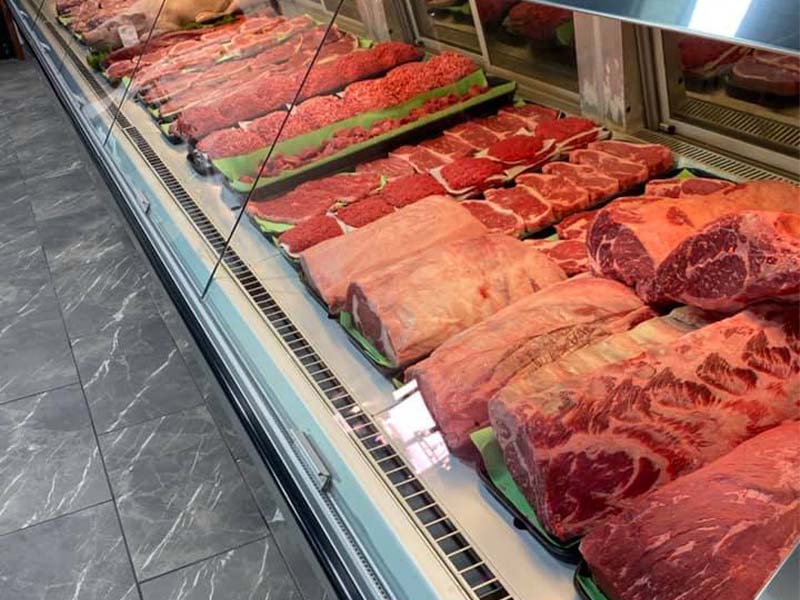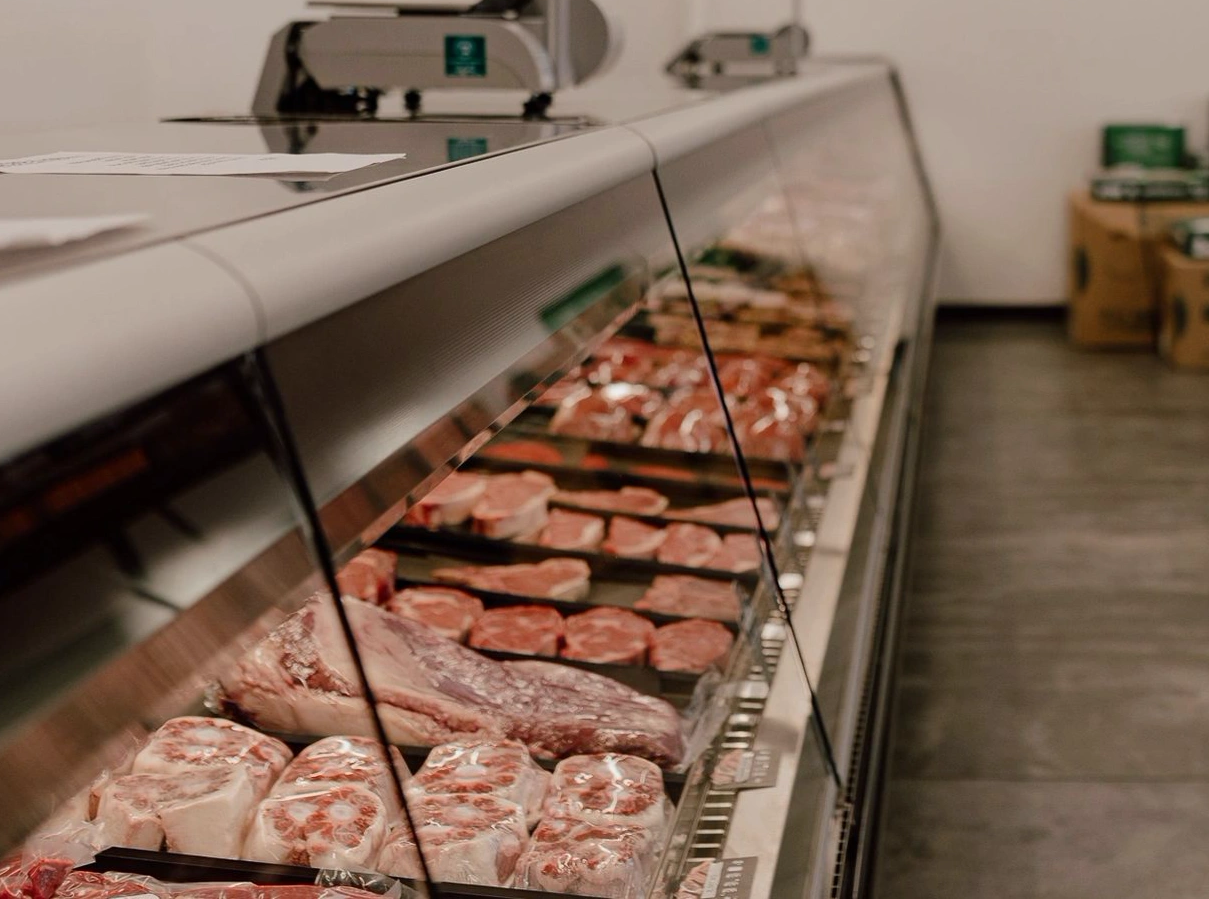Why Locals Love Bagley Farms Meat Market Edwardsville IL for Their Meat Purchasing
Why Locals Love Bagley Farms Meat Market Edwardsville IL for Their Meat Purchasing
Blog Article
Uncover the Art of the Butcher's Cut in a Modern Meat Market
In the ever-evolving landscape of contemporary meat markets, the butcher's cut has transcended its traditional origins, combining olden craftsmanship with modern methods. bagley farms meat market edwardsville il. Today's butchers are not just cpus of meat; they are experienced artisans that stress sustainability and honest sourcing. Their competence in picking and preparing cuts customized to certain culinary demands uses an unmatched eating experience. Yet, what really establishes the modern butcher apart is their capacity to create a deeper link between customers and the origins of their meat. Just how do these masters balance practice with advancement, and what implications does this have for the future of meat intake?
Development of Butchery Strategies

The mid-20th century saw butchery methods even more refined by clinical understandings into muscle mass biology and meat aging, enhancing both inflammation and preference. Advancements like vacuum product packaging and refrigeration extended item shelf-life, enabling butchers to expand offerings and boost quality assurance. This period additionally noted the rise of customized devices, such as band saws and meat slicers, which enhanced precision and performance in meat handling.
The 21st century has presented electronic technology right into the butchery realm. Digital systems currently aid in monitoring animal provenance and maximizing cuts to satisfy specific consumer preferences. In addition, a rebirth in artisanal butchery has actually emerged, blending standard skills with contemporary knowledge to satisfy consumers looking for honest and lasting meat choices. This advancement highlights a vibrant interplay between practice and advancement, meeting contemporary needs while maintaining the craft's heritage.

Recognizing Meat Cuts

Understanding the intricacies of meat cuts is necessary for both butchers and customers seeking quality and value. Each cut originates from a various part of the pet, presenting special tastes, appearances, and cooking methods. Proficiency of these distinctions not only boosts cooking experiences but likewise optimizes the utility of each carcass. For butchers, precise cuts mirror skill and regard for the craft, making sure very little waste and optimum return.
The key categories of meat cuts consist of primal, sub-primal, and retail cuts. Primitive cuts, such as the loin, rib, and chuck, are the large areas at first divided from the carcass. Butchers then damage these down further right into sub-primal cuts, prior to lastly generating retail cuts available to customers, like ribeye or tenderloin. Each stage requires cautious focus to anatomical structure and muscular tissue composition.
Comprehending muscular tissue composition is important; muscular tissues used a lot more regularly by the animal tend to be harder and are best matched for slow cooking techniques, while less-used muscular tissues, like those located in the loin, are more tender and suitable for barbecuing or roasting. Knowledge with these distinctions equips customers to make enlightened selections, enhancing their culinary endeavors.
Choosing High Quality Meat
Picking the right meat includes greater than just picking a visually enticing item from the display screen. The art of selecting quality meat requires a critical eye and expertise of certain qualities that symbolize freshness and excellence. Pay interest to website link the color; beef needs to have a brilliant, cherry-red shade, while lamb ought to show a soft their website pink tone, and pork a light pink. This suggests the meat is fresh and hasn't been exposed to oxygen for also long.
Second of all, consider the marbling, which describes the white flecks of fat within the muscular tissue. Correct marbling is a key indicator of inflammation and flavor, as it thaws during cooking, enhancing the meat's juiciness. Keep in mind, greater marbling usually associates with premium high quality cuts, such as USDA Prime.
Texture is one more critical aspect; meat should feel strong to the touch, not slimy or extremely soft. Additionally, be conscious of the aroma. Fresh meat ought to have a tidy, neutral smell, complimentary from any sour or off-putting smells.
Pairing Cuts With Food Preparation Approaches
Effectively coupling cuts of meat with the proper cooking methods is important for achieving optimum taste and texture. These approaches enhance the meat's natural tastes and ensure a juicy coating.
Conversely, tougher cuts like brisket and chuck roast are abundant in collagen, which damages down into jelly when cooked gradually. These cuts are optimal for braising or slow-moving roasting, allowing the meat to soften over time and develop deep, intricate tastes. Cuts such as short ribs and pork shoulder fare well with slow-cooking methods, Get the facts where extended cooking times change their durable textures into delicious meals.
Lamb shanks and oxtail, which require prolonged food preparation to soften, are best candidates for cooking or slow-moving simmering. These techniques coax out rich, passionate flavors while maintaining dampness. By comprehending the distinct qualities of each cut, cooks and home chefs alike can elevate their cooking developments, guaranteeing each dish is both pleasing and memorable.
The Butcher's Duty Today
Navigating the progressing landscape of the modern meat market, the butcher's function today expands beyond simple prep work of cuts. Contemporary butchers are culinary artisans, instructors, and advocates for lasting techniques.
Along with crafting specific cuts, butchers now engage straight with consumers, offering cooking recommendations and customizing selections to match individual requirements and choices. Their know-how in meat aging, marbling, and taste accounts empowers consumers to make educated choices, boosting their culinary experiences. This customized service exhibits the butcher's advancing role as a trusted consultant in the kitchen area.
In addition, butchers are pivotal in lessening waste, making use of whole animals to create diverse products such as sausages and stocks - bagley farms meat market edwardsville il. This extensive technique not just values the pet yet also aligns with contemporary sustainability goals. By doing this, the modern butcher symbolizes both custom and development, adapting to an ever-changing market while protecting the virtuosity and honesty of their craft

Conclusion
Mastery in comprehending varied meat cuts and quality signs encourages butchers to provide educated suggestions, straightening specific cuts with ideal cooking techniques. By recognizing historic practices while accepting modern demands, the butcher's duty remains important in today's advanced meat market.
Report this page